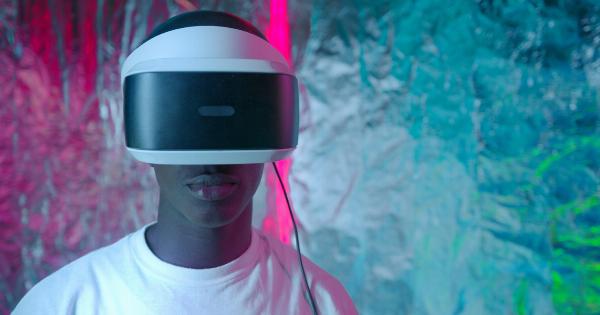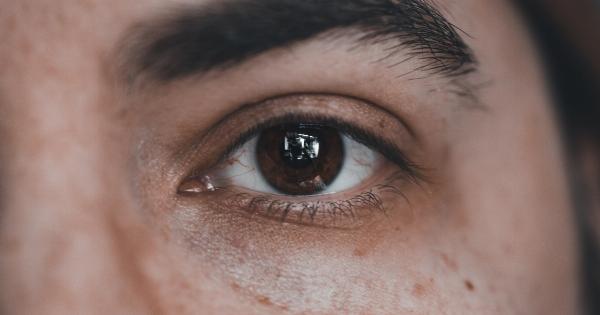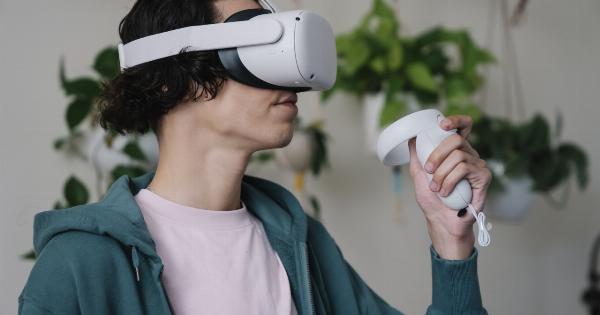In recent years, video games have gained a significant amount of attention for their potential benefits in various aspects of human life.
From entertainment to education, video games have proven to be powerful tools for enhancing cognitive skills, promoting learning, and improving social interactions. However, one particularly fascinating application of video games lies in their potential as a fun and effective treatment for amblyopia in children.
Understanding Amblyopia
Amblyopia, commonly known as “lazy eye,” is a vision disorder that affects approximately 3% of children worldwide. It occurs when one eye is unable to achieve normal visual acuity, leading to reduced or impaired vision.
This condition is typically caused by a developmental problem in the brain during early childhood, often as a result of crossed or misaligned eyes (strabismus), significant differences in prescription between the two eyes (anisometropia), or other factors that prevent the eyes from working together properly.
The Traditional Treatment Approach
Traditionally, the treatment for amblyopia involved patching the stronger eye to force the weaker eye to work harder, allowing for visual improvements over time.
While this method has proven to be effective to some extent, it is often met with resistance and discomfort by young children, hampering compliance and overall success rates. Additionally, the conventional treatment approach does not address the underlying issues of abnormal binocular vision and poor eye-hand coordination, which are essential for normal visual function.
The Potential of Video Games
Video games have recently emerged as a promising alternative or complementary treatment for amblyopia. Their interactive and engaging nature presents a unique opportunity to address the challenges faced by children during conventional treatment.
By combining visual stimuli with a rewarding gameplay experience, video games can encourage active participation and motivate children to complete prescribed tasks, thereby increasing compliance and treatment effectiveness.
How Video Games Can Help
Video games designed for amblyopia treatment typically incorporate elements that stimulate both eyes, promote eye-hand coordination, and encourage binocular vision.
Various gameplay mechanics and visual techniques are utilized to create a well-rounded therapeutic experience. These include:.
1. Dichoptic Vision
Many video games for amblyopia treatment utilize a technique known as dichoptic vision, where each eye receives different visual information simultaneously.
By presenting different images or stimuli to the two eyes, the brain is challenged to fuse these inputs, promoting the development of binocular vision and reducing the dominance of the stronger eye.
2. Stereoscopic 3D Effects
Incorporating stereoscopic 3D effects into video games can enhance depth perception and spatial awareness.
By presenting visually stimulating environments that require accurate depth judgment, these games promote the use of both eyes and train the brain to process visual information effectively.
3. Eye-Tracking Technology
Some video games for amblyopia treatment utilize eye-tracking technology, which monitors and analyzes the child’s eye movements during gameplay.
This technology allows for real-time feedback, enabling the child to become aware of their eye alignment and make necessary adjustments, further promoting improved visual function.
4. Adaptive Difficulty Levels
Video games designed for amblyopia treatment often feature adaptive difficulty levels, which tailor the gameplay experience to the child’s specific needs and abilities.
By gradually increasing the complexity and challenging the child’s visual skills, these games provide continuous progression and keep the child engaged and motivated.
Research and Evidence
A growing body of research supports the effectiveness of video games as a treatment for amblyopia.
Numerous studies have demonstrated significant improvements in visual acuity, binocular vision, and eye-hand coordination following video game-based therapy. One notable study published in JAMA Ophthalmology in 2016 found that amblyopic children who underwent video game treatment showed substantial gains in visual acuity compared to those who received conventional patching therapy.
The Importance of Compliance and Engagement
One of the key advantages of video game-based therapy is its ability to increase compliance and engagement among young patients.
Unlike traditional patching, which can be monotonous and challenging to endure, video games offer an enjoyable and interactive experience. This enjoyable nature encourages children to actively participate in treatment sessions and complete the prescribed tasks with enthusiasm, ultimately leading to better treatment outcomes.
The Future of Amblyopia Treatment
As technology continues to advance and video game design becomes more sophisticated, the future of amblyopia treatment looks promising.
Virtual reality (VR) and augmented reality (AR) technologies hold tremendous potential in creating immersive and interactive experiences specifically tailored to the needs of amblyopic patients. These technologies can further enhance the effectiveness of treatment by providing realistic and engaging environments that stimulate visual development.
The Role of Healthcare Professionals
While video game-based therapy offers several advantages in the treatment of amblyopia, it is essential to involve healthcare professionals throughout the process.
Optometrists, ophthalmologists, and other specialists play a crucial role in assessing and monitoring the child’s progress, prescribing appropriate treatment plans, and ensuring optimal outcomes. Their expertise is vital in guiding parents and children to select high-quality video games that are safe and effective for treatment purposes.
Conclusion
Video games have emerged as an exciting and effective treatment option for amblyopia in children.
Through their interactive and engaging nature, video games provide a fun and rewarding approach to address the challenges of conventional treatment methods. By promoting compliance, encouraging binocular vision, and enhancing eye-hand coordination, video games offer new possibilities for improving visual acuity and overall visual function.
As technology continues to advance, video game-based therapy, together with the guidance of healthcare professionals, holds great promise in revolutionizing the treatment of amblyopia.






























